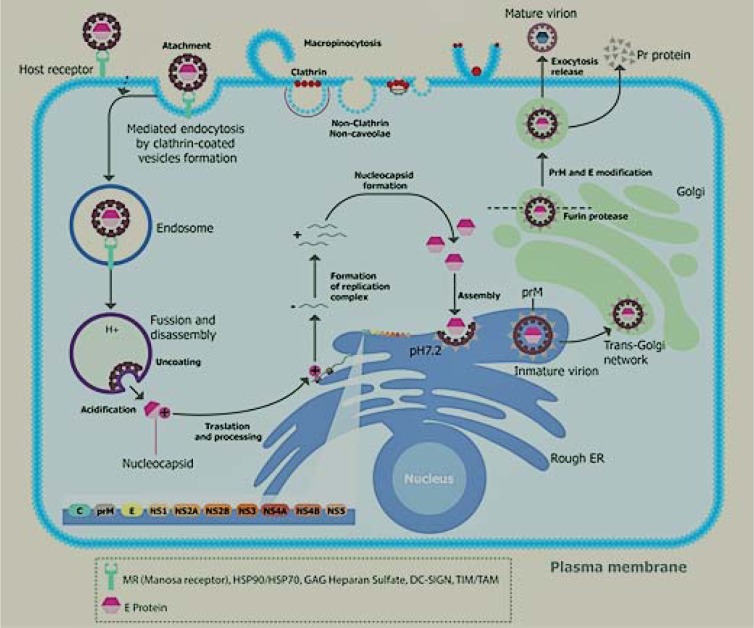Figure 2. Life cycle of DENV in infected cells. The viral particles are released in the bloodstream; they then infect the white cells; the specific binding site of the virus is located in the E protein; it interacts with the specific superficial receptors of the host's cell, for example, mannose receptor, HSP90, HSP70, GAG heparin sulfate, DC-Sign, and TIM/TAM (Perera-Lecoin et al. 2013); this initiates the entry of the virus, endocytosis mediated by receptors is the primary route by which flavivirus are internalized. A summary of the steps that occur during the infection process from the entry of virus into the cell up to the release of new mature viral particles is as follows:
The entry into the cell is achieved by endocytosis within clathrin-coated vesicles.The acidification of endosomes leads to insertion of the E protein into the endosomal membrane, the fusion of the viral envelope, and endosomal membrane releases nucleocapsid into the cytosol. After the nucleocapsid is uncovered, the viral RNA is translated as a single polyprotein, translocated across the host endoplasmic reticulum membrane.Particles that have budded from the ER are then processed by carbohydrate addition and modification, as they proceed through the Golgi membrane system. It is likely that transportation into the trans-Golgi network requires the presence of the glycosylated prM protein. The mature viral particles are released by exocytosis and can infect more cells.

